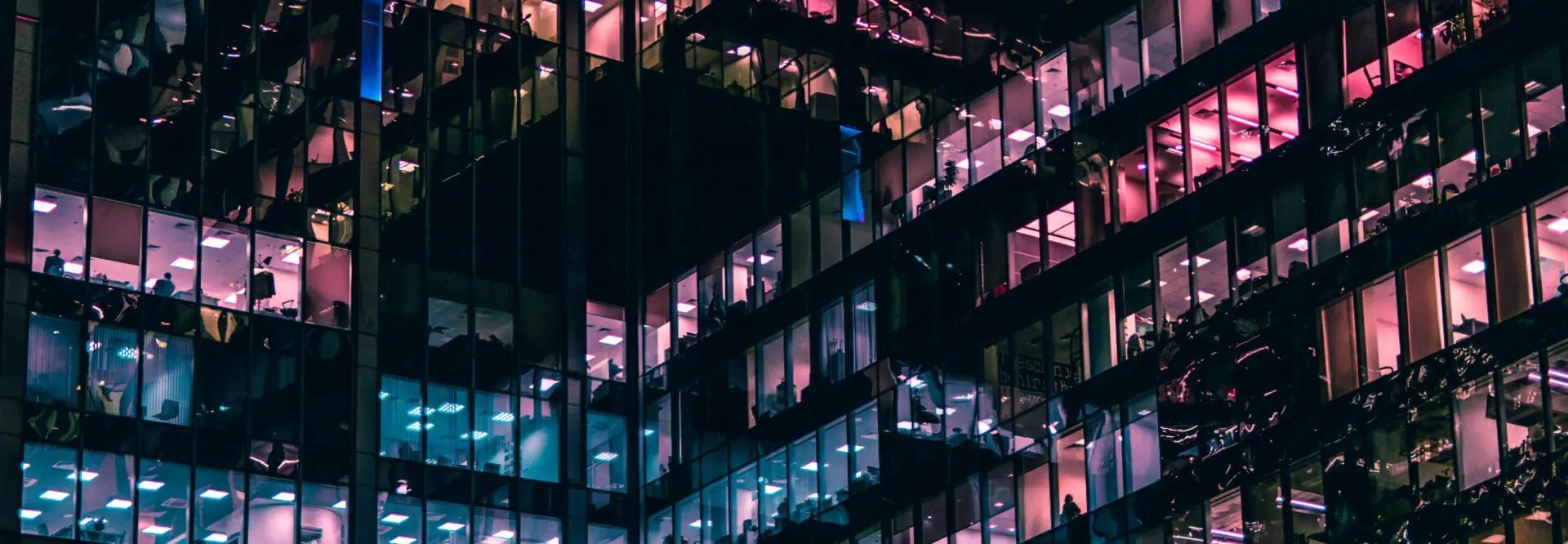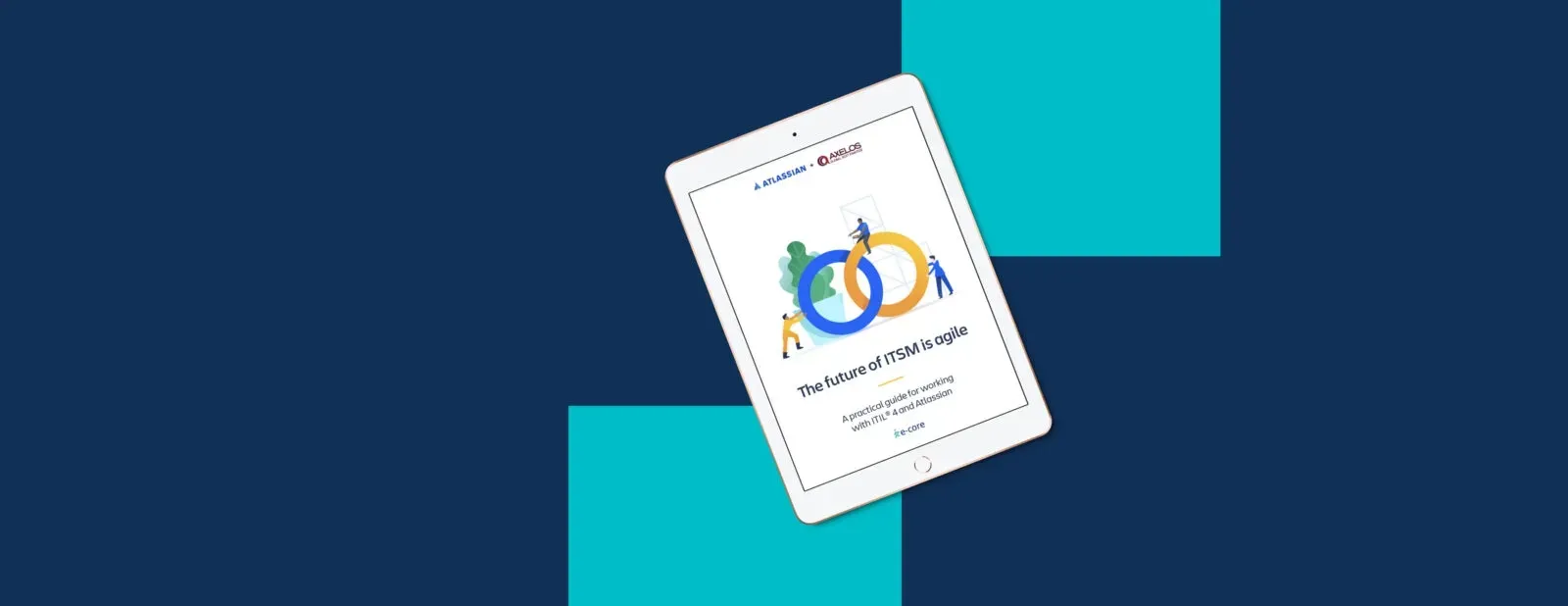What would you like to explore?
Dive into our research, insights, and client success stories to learn how to navigate change and unlock value faster.
Or browse the topics:
Topic
Industry
Content Type

By e-Core
•
July 22, 2025
Throughout my career as a Project Manager, I’ve seen many companies, even those whose core business is technology, struggle to adopt Agile project management models like Scrum and Kanban. While many claim to use these methodologies, most actually operate under a hybrid approach, applying selected Agile practices while maintaining a traditional mindset. Even more than 20 years after the Agile Manifesto, many organizations still have difficulty executing core Agile practices. Issues like inconsistent ceremonies , poor task prioritization , and lack of delivery planning often delay product launches and lead to team dissatisfaction. Recently, I served as a Scrum Master for a client project where, over six months, we improved the team’s Agile processes and project management maturity. Working in an extended team model with the client’s development team and Product Owner, I helped optimize ceremonies and workflows while the client team remained focused on strategic business efforts. By the end of this period, the squad was operating more efficiently, with better backlog management, faster task execution, and shorter release times. This article shares the Agile improvements we implemented and the benefits they brought to the te am. Optimizing the daily me eting Agile frameworks recommend that the Daily Meeting (or stand-up) lasts no more than 15 minutes. When I joined the project, these meetings often exceeded 30 minutes because they had become status report sessions, reviewing each task and its delivery timeline. To fix this, we refocused the Daily on its core purpose: having each developer share (a) what they worked on, (b) what they planned to work on next, and (c) whether they had any blockers. To support the change, we created a shared page where team members could write their answers before the meeting. This helped them prepare concise updates. Eventually, this support wasn’t needed anymore, the team internalized the practice. We also noticed that completed tasks weren’t advancing through the Kanban board because developers weren’t updating the workflow status. This created bottlenecks despite tasks being technically done. To address this, we encouraged the team to update the task status daily, document the adopted solution, identify the next step, and assign the task to the next person in the execution flow . Eventually, the team became autonomous in keeping the board up to date. Another challenge was that unrelated discussions often took place during the Daily, such as deep dives into technical solutions. To resolve this, we created a separate 15-minute daily meeting for technical discussions and a weekly refinement session for reviewing complex tasks. This kept the Daily focused and efficient. By the end of the project, the Daily Meeting had gone from 40 to 15 minutes thanks to these adjustments . Product backlog prioritization One of the most common challenges in Agile teams is backlog prioritization. When everything is a priority, nothing truly is. Trying to deliver too many features at once reduces focus and often results in rework. In our project, the Product Managers had a long list of features they wanted released as soon as possible. We worked with the PO to rank tasks based on business value, impact, and urgency , using prioritization techniques such as customer value, cost of delay, and effort-to-impact ratios. We ensured this prioritization was clearly reflected in the Kanban board so developers would know what to tackle next without needing to ask. This increased autonomy and avoided idle time between tasks. The prioritized backlog also became a prerequisite for Sprint Planning. Developers would estimate each task, and based on team velocity , we could forecast what was achievable in the next Sprint. By avoiding work on lower-priority items before higher-priority ones were completed, we reduced WIP (Work in Progress) and increased delivery focus. Over six months, we reduced WIP by 20% and doubled the number of completed tasks per Sprint. Improving task detail Developers need well-defined tasks to execute efficiently. Yet in this project, many tasks only had a title or vague descriptions, requiring developers to chase down details, which delayed development.

By Dan Teixeira
•
February 28, 2024
In the relentless pursuit of efficiency and innovation, modern organizations continuously seek methodologies that not only enhance productivity but also align with their strategic goals. Among the most transformative approaches in recent years is the adoption of Team Topologies—a concept that has revolutionized the way businesses structure their teams for optimal performance. This article delves into the essence of Team Topologies, illustrating its significance and providing a roadmap for its implementation to achieve agile success. Table of Contents The Genesis of Team Topologies The Four Types of Teams Strategic Alignment: The Core of Success Benefits of the Team Topologies Framework Practical Applications: From Theory to Action Implementing Team Topologies: A Step-by-Step Guide The Genesis of Team Topologies Over the past decade, the agile landscape has predominantly navigated between two methodologies: a top-down approach, driven by Portfolio Management Offices (PMOs) aiming to enhance process efficiency and work visibility, and a bottom-up strategy, addressing the immediate needs and challenges faced by teams in execution. This dichotomy, while beneficial in certain aspects, has overlooked two critical components essential for holistic organizational agility: the business perspective and the role of technology leadership. Historically, agile frameworks have not adequately addressed the business’s intrinsic needs and how these objectives are iteratively realized. The focus has often been on the process rather than on the underlying business value and strategic goals driving these efforts. Equally, technology leaders such as CIOs, CTOs, and their technical competencies have been conspicuously absent from these frameworks. This oversight leaves a gap in aligning technical leadership with agile practices, creating a disconnect between strategy and execution. Conceived by Matthew Skelton and Manuel Pais, Team Topologies offers a refreshing departure from this trend by prioritizing a more strategic and integrated approach . It begins with a deep understanding of the business’s core needs, transitioning to the architecture that supports these objectives. Only then does it define the team structures necessary to uphold this architecture. This methodology ensures that both the business’s desires and the technology leaders’ expertise are not just considered but are foundational to the agile framework. By doing so, Team Topologies provides a practical and comprehensive model that bridges the gap between business objectives, technical leadership, and team execution. This approach not only acknowledges but actively incorporates the roles of business stakeholders and technology leaders into the agile process. It shifts the focus from merely executing tasks to understanding and achieving business outcomes, supported by an architecture that enables these goals. In this way, Team Topologies redefines agile integration, offering a pathway to genuine organizational agility that is both inclusive and effective.

By e-Core
•
November 7, 2022
Connections ’22 was a day-long conference offering insight, networking and information. It offered inspiration and, perhaps, intimidation. Sponsored by e-Core, Connections ’22 was true to its name. It brought together some of the leading thinkers in IT. It also offered specific solutions to such popular IT topics as Cloud migration, cybersecurity and ITSM. {It was attended by more than 200 IT professionals, representing 61 companies.} As expressed in its title, the premise is laudable but daunting: “Aligning IT and Business in a Digital-First World.” Most enterprise businesses and IT organizations are better aligned than ever in their goals and strategies, said Bruce Guptill, chief strategist at Addressable Markets and contributing analyst at The Analyst Syndicate. But, even after 50 years of enterprise IT, an average of 70% of business IT projects still fail to meet objectives within time and cost expectations, he asserted. That we are in a “Digital First World” was undisputed by the many speakers. Digital transformation is coming for us all, whether we like it or not. Daunting challenges and an ever-accelerating pace of that digital world are alarming. Terry Jones noted it took the telephone 50 years to reach 50 million users. Pokémon Go did it in 15 days. Jones is founder of Travelocity and founding chairman of Kayak. However, before you rail at your boss who, “just doesn’t get it,” take a look at Nancy Rademaker’s presentation . She pointed out that while technology growth is exponential, human minds are linear. She cited Martec’s Law, which states that technology develops exponentially, but organizations change logarithmically . Even Bill Gates said, “We always overestimate the change that will occur in the next two years and underestimate the change that will occur in the next 10.” Rademaker is a futurist and co-founder at Drawify. In fact, before you’re assigning the blame to someone else, consider owning it yourself. Spencer Horn, from Team Performance Authority, espoused “Owning Your Outcomes.” He cited latest Gallup research saying only 21% of us are engaged in our work. He defined three types of responsibility: non-responsibility, irresponsibility, and responsibility. He offered five steps to take greater ownership in your work: own your values, own your outcomes, own your failures, own your development, and own your thoughts. Employee engagement is critical for successful digital transformation. Rademaker said that 70% of all digital transformations fail, because the human side of change is not addressed . She quoted Doug Conant, CEO Campbell’s Soup, “To win in the marketplace, you must first win in the workplace.” Speakers agreed that change – deep, radical, change – is coming to all businesses. Rademaker said, “Three quarters of (executives) predict significant industry disruption in the next three years.” She explained, “It’s all about survival in what I call the ‘next normal.’ The next normal is basically this era where we’ve moved from digital being a novelty to digital becoming the new norm.” Guptill said , “It doesn’t matter what business you are in anymore. You’re going to emphasize your technology.” Jones said, “Disruption is here. It’s now. And we have to deal with it,” he said. He added that disruptors are defined by perspective. “The only reason you call it a disruption is because you didn’t do it,” he said. “To the disruptor it’s an innovation.” They talked about how hard it is to change. The engine of innovation rests on two pillars, Jones said, culture and teams. “Changing culture is a contact sport,” he added. He suggests hiring people who don’t fit in, people who are not like you. Jones quoted Gordon Moore, co-founder Intuit, “The world wants geniuses. It just wants them to behave like other people.” Jones said digital transformation requires a change in culture to allow experimentation and failure. Innovation is not the Olympics, Jones opined, a one-time, one-shot at your best. “Innovation is like baseball,” he said. “If you fail 70% of the time, you’re actually awesome. You get a lot of chances in baseball.” Jones said, “Twenty percent of what Kayak displays every day is a test.” Rademaker quoted Jack Ma, CEO, Alibaba, “At Alibaba we don’t have strategy. We do A-B testing every single day. And we adapt accordingly, preferably within two days.” Jones said, “We have to allow failure. That’s one of the biggest problems in corporations. They don’t take risks. You have to kill projects and not people. I think the biggest thing in the twenty-first century is you have to say ‘yes.’ If you come together, you have assets any startup would die for. All those startups have already said yes. They’re focused on one thing, and coming to kill you.” They outlined consequences of failing to act. “Change is inevitable, but growth is optional,” Jones said. “The problem with innovation is most people are afraid of it,” he added. Guptill said, “There’s no such thing as a sustainable technological advantage.” Rademaker quoted General Eric Shinseki, U.S. Army Chief of Staff, “If you don’t like change, you’re going to like irrelevance even less.” There’s so much more! Connections ’22 outlined some specific tools to accomplish digital transformation. From breaking data out of silos to fostering strong communications among teams to speeding innovation. Rachel Wright , author of “Strategy for Jira” offered strategies for improving team performance using Jira and automation. Chris Kissel , research VP, security products, at IDC, described how to establish your understanding of cybersecurity posture and move beyond its core. “Every time we develop a digital transaction, we develop a new adversary,” he said. As Marcio Silveira, CEO, e-Core said in opening the day, “It is about gaining insights from leaders across the tech landscape. We offered ideas, new perspectives, for your company and your employees to support your digital transformation journey. We offered content, practical advice, so you can better prioritize your digital transformation efforts.” Silveira also noted you do not have to go it alone. His company offers people, process and technology to assist your company in its digital transformation. His take on digital transformation comes from working with 270 customers across the globe, leading a team of more than 670 e-Core employees that, “go above and beyond every day.” Silveira said, “Leaders face many challenges. Living with technologies of the past. Working with challenges of the present.” In addition to the high-perspective quoted in this blog post, there was practical advice about Cloud Migration, ITSM, cyber security, customer and employee communication tools and more. Round table discussions with experts in their respective fields included: Enabling Innovative, Safe and Agile Use of Cloud Computing for Business, How to Weather the Cloud Skills Shortage, and IT Leaders in Cloud Getting Coffee. Tech sessions included: e-Core Cloud App Modernization: Product Demo ITSM Maturity Level: How to assess it and move forward Case Study: Atlassian Cloud Migration – Acuity Knowledge Partners Empower, Innovate, Transform: A Successful Jira Cloud Migration Enabling Innovative, Safe and Agile Use of Cloud Computing Be More than Just Fine: Why to adopt e-Core Atlassian Prime Services AWS Well-Architected: Learn, measure and build using best practices Google Cloud: GCP — Application development specialization, best practices e-Core Squads: Product Demo More content from Connections ’22 will be made available, including video highlight reels edited from the presentations, quick-read summations, and full presentations. You can also listen to our e-Core Connections ‘22 podcast, where Guptill moderates conversations about digital transformation, modernizing IT through the cloud, aligning IT initiatives with business goals, and the rules of the cloud game. Stay tuned! About e-Core: Our Purpose We believe in the positive impact of digital evolution, and we want to be the trusted partner of those who want to transform the world and build a better future for people. This is what moves us and what gives us the courage to evolve and go beyond. This is our mission: to connect people and technology to build a better future together. Who we are We are a consulting and technology services partner focused on digital innovation and business transformation. We combine our global experience in diverse industries with leading-edge technologies to help our clients transform and accelerate their business models, develop innovative digital solutions, scale technological capabilities, and sustain their growth. We are e-Core, your partner to evolve and go beyond.

By e-Core
•
September 30, 2022
ITIL 4 is here – and it’s more agile than ever! To keep up with the speed of business, IT teams are transforming the way they work. Gone are the days of inflexible processes and heavy workflows. IT teams are shifting towards a more collaborative, iterative, and customer-centric approach, in order to break down silos, adapt quickly, and deliver seamless experiences. In short, ITSM is becoming more agile. In this guide, Atlassian and AXELOS have partnered to help jumpstart your agile journey. You’ll learn eight practices typically used by high-velocity IT teams, and tips from the Atlassian Team Playbook to bring more agility and collaboration into ITSM: Continual improvement with retrospectives Agile project management to speed up project delivery Knowledge management to empower team culture Customer-centric service desk and request management Adaptive incident management Streamlined change control through automation and collaboration Continuous delivery for deployment management Integrated software development and operations teams

By e-Core
•
June 26, 2022
Working with Specialized Partners can help you accelerate time to value with Agile at scale, cloud, and ITSM implementations. Atlassian recognizes specialized Partners as service providers that deliver consistent, high-quality services to optimize customer satisfaction and outcomes. These partners earn Specialization by fulfilling rigorous requirements within particular Atlassian solution areas.

By e-Core
•
June 10, 2022
Learn how e-Core implemented an integrated and effective ITSM tool in 40 days, without impacting internal and external customers. Highlights of the partnership between e-Core and the customer: The customer goal was to decommission its old tool in 40 days. We had to implement a complete ITSM solution involving Incident, Problem and Change Management flows and processes, with minimum impact to our customer’s customers. Taking advantage of Automation for Jira, we were able to automate several processes and schedule automated ticket creation for recurrent outlines and activities.
News
Get more insights in your inbox
Get the latest articles and insights







